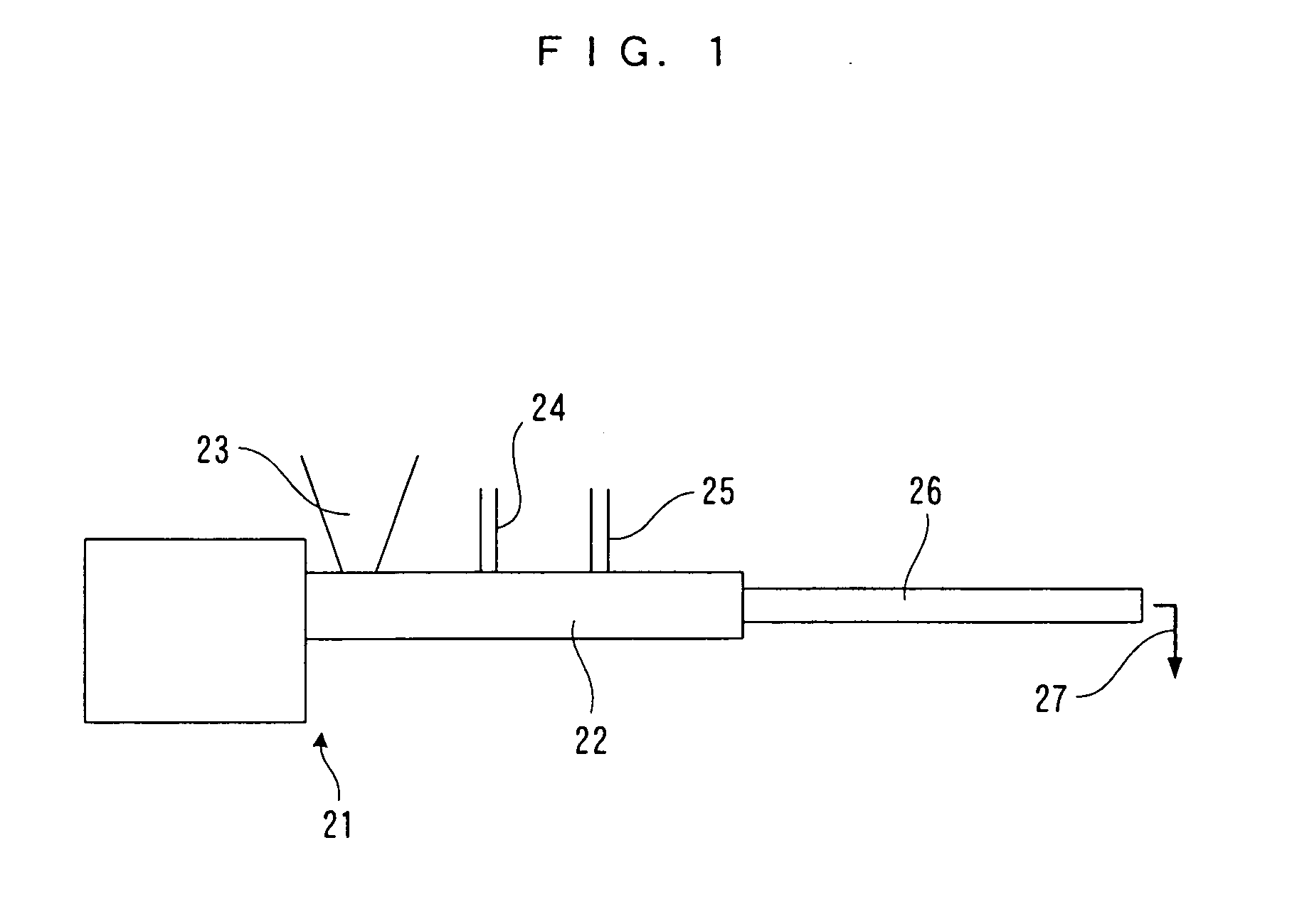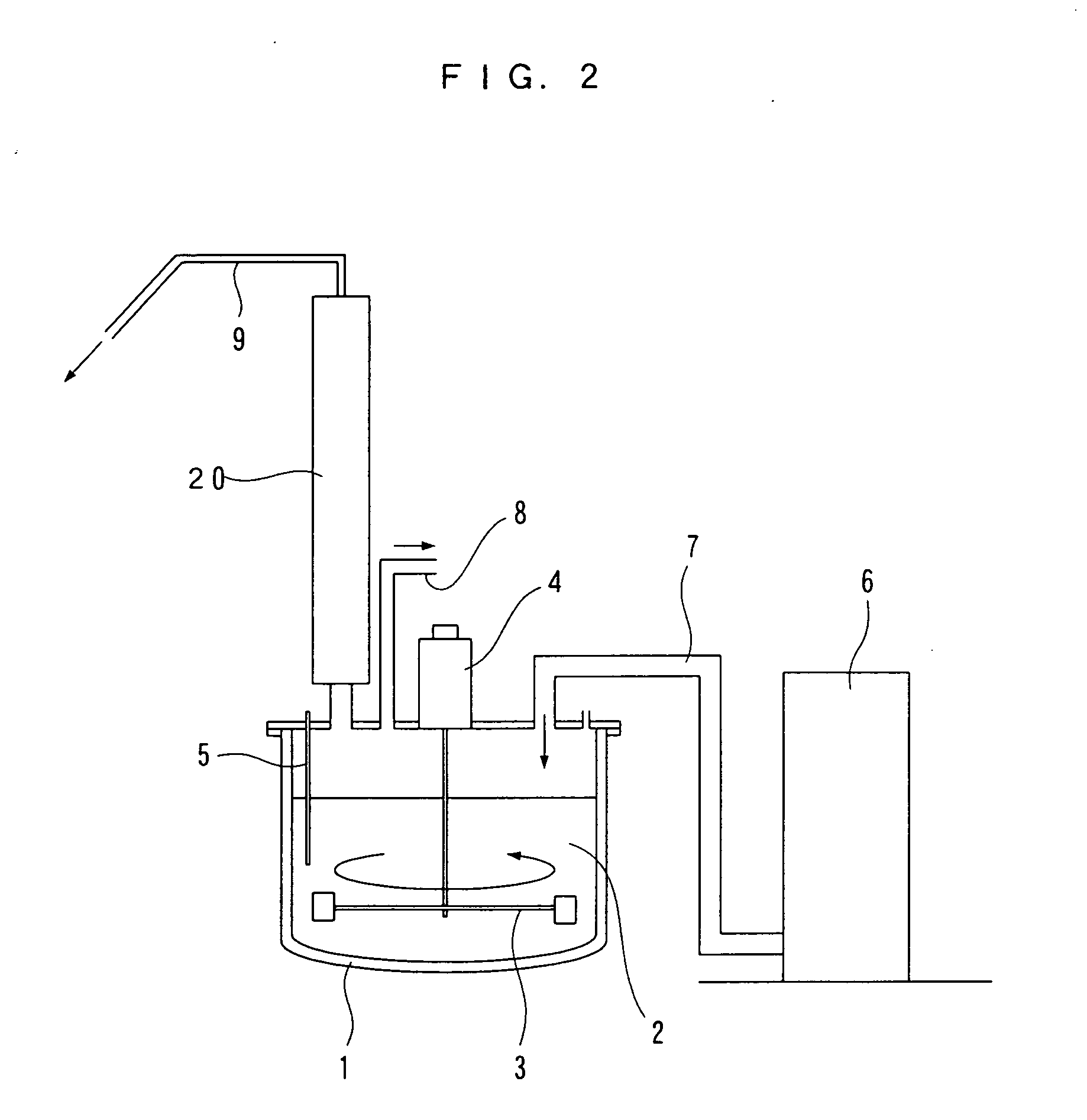Method of depolymerizing polyethylene terephthalate and process for producing polyester resin
a technology of polyethylene terephthalate and polyethylene terephthalate, which is applied in the field of depolymerization of polyethylene terephthalate and the process for producing polyester resin, can solve the problems of long time, inability to increase the proportion of r-pet added, and the depolymerization reaction requires several hours, so as to achieve the effect of depolymerization of r-p
- Summary
- Abstract
- Description
- Claims
- Application Information
AI Technical Summary
Benefits of technology
Problems solved by technology
Method used
Image
Examples
example 1
Extruder: ‘S-1’ counter-rotating twin-screw extruder made by Kurimoto Iron Works Co., Ltd.
Extruder temperature: 220 to 280° C.
Materials: (i) Waste PET bottle flakes (R-PET): made by Yono PET Bottle Recycle Co., Ltd.
[0066] (ii) Propylene glycol [0067] (iii) Catalyst: Dibutyltin oxide
Method
[0068] (1) The extruder was set to a predetermined temperature, and a material that had been obtained by adding the propylene glycol and the dibutyltin oxide to the R-PET in advance was supplied in.
[0069] (2) The molten R-PET that had been subjected to a depolymerization reaction upon passing through the extruder was solidified at room temperature. For each addition, the molecular weight and the melting point of the solidified material were measured, whereupon both dropped for each addition as in Table 1 below.
TABLE 1MolecularMeltingDetails of additionweightpoint (° C.)a)R-PET only10900240-250b)25 mass % of propylene glycol added to6350230-240R-PETc)25 mass % of propylene glycol and24502...
example 2
Extruder: ‘SRV-P40 / 30’ single-screw extruder made by Nihon Yuki Co., Ltd., L / D=22
Extruder temperature: 220 to 280° C.
Materials: (i) Waste PET bottle flakes (R-PET): made by Yono PET Bottle Recycle Co., Ltd.
[0072] (ii) Propylene glycol [0073] (iii) Catalyst: Dibutyltin oxide
Method
[0074] (1) The extruder was set to a predetermined temperature, and raw materials as above were supplied in.
[0075] (2) The molten R-PET that had passed through the extruder was solidified at ordinary temperature. For each addition, the molecular weight and the melting point of the solidified material were measured, whereupon both dropped for each addition as in Table 2 below.
TABLE 2MolecularMeltingDetails of additionweightpoint (° C.)a)R-PET only15400240-250b)0.3 mass % of dibutyltin oxide and3050220-2305 mass % of propylene glycol addedto R-PET in advancec)0.3 mass % of dibutyltin oxide added to6480230-240R-PET in advance, and 5 mass %of propylene glycol added frompart way along extruder
example 3
Extruder: ‘PMT 47-III’ double-screw extruder made by IKG, L / D=30
Extruder temperature: 220 to 280° C.
Materials: (i) Waste PET bottle flakes (R-PET): made by Yono PET Bottle Recycle Co., Ltd.
[0076] (ii) Propylene glycol [0077] (iii) Catalyst: Dibutyltin oxide or tetraisopropoxytitanate
Method
[0078] (1) The extruder was set to a predetermined temperature, and raw materials as above were supplied in.
[0079] (2) Regarding the details of the addition, 0.3 mass % of the catalyst was added to the R-PET in advance, and 50 mass % of propylene glycol was supplied in from part way along the extruder using a metering pump.
[0080] (3) The molten R-PET that had passed through the extruder was a white solid at ordinary temperature. The molecular weight and the melting point of the solidified material were measured to be as in Table 3 below.
TABLE 3MolecularMeltingDetails of additionweightpoint (° C.)a)0.3 mass % of dibutyltin oxide added to920100-140R-PET in advance, and 50 mass % ofpropyl...
PUM
| Property | Measurement | Unit |
|---|---|---|
| Percent by mass | aaaaa | aaaaa |
| Substance count | aaaaa | aaaaa |
| Fraction | aaaaa | aaaaa |
Abstract
Description
Claims
Application Information
 Login to View More
Login to View More - R&D
- Intellectual Property
- Life Sciences
- Materials
- Tech Scout
- Unparalleled Data Quality
- Higher Quality Content
- 60% Fewer Hallucinations
Browse by: Latest US Patents, China's latest patents, Technical Efficacy Thesaurus, Application Domain, Technology Topic, Popular Technical Reports.
© 2025 PatSnap. All rights reserved.Legal|Privacy policy|Modern Slavery Act Transparency Statement|Sitemap|About US| Contact US: help@patsnap.com



